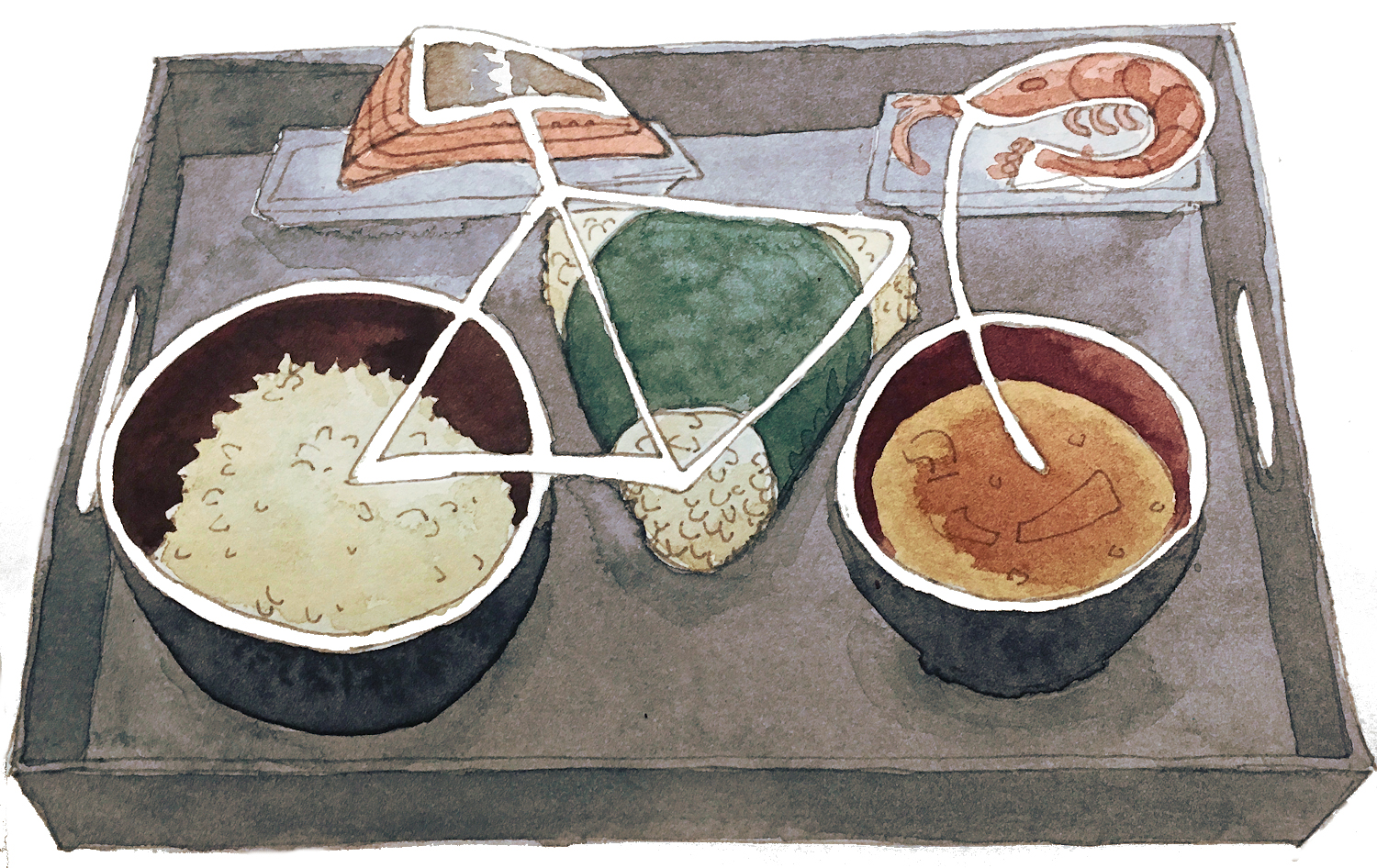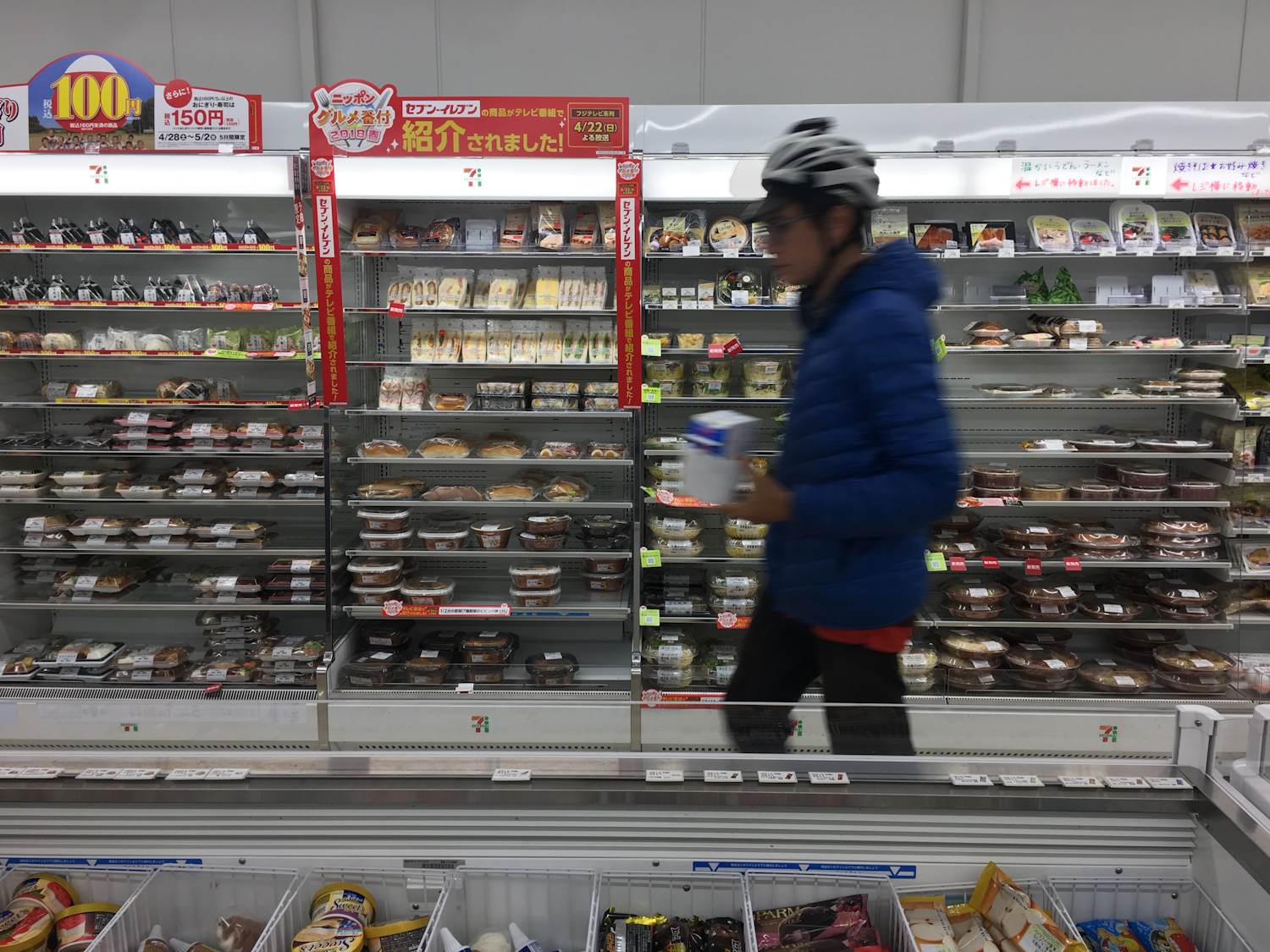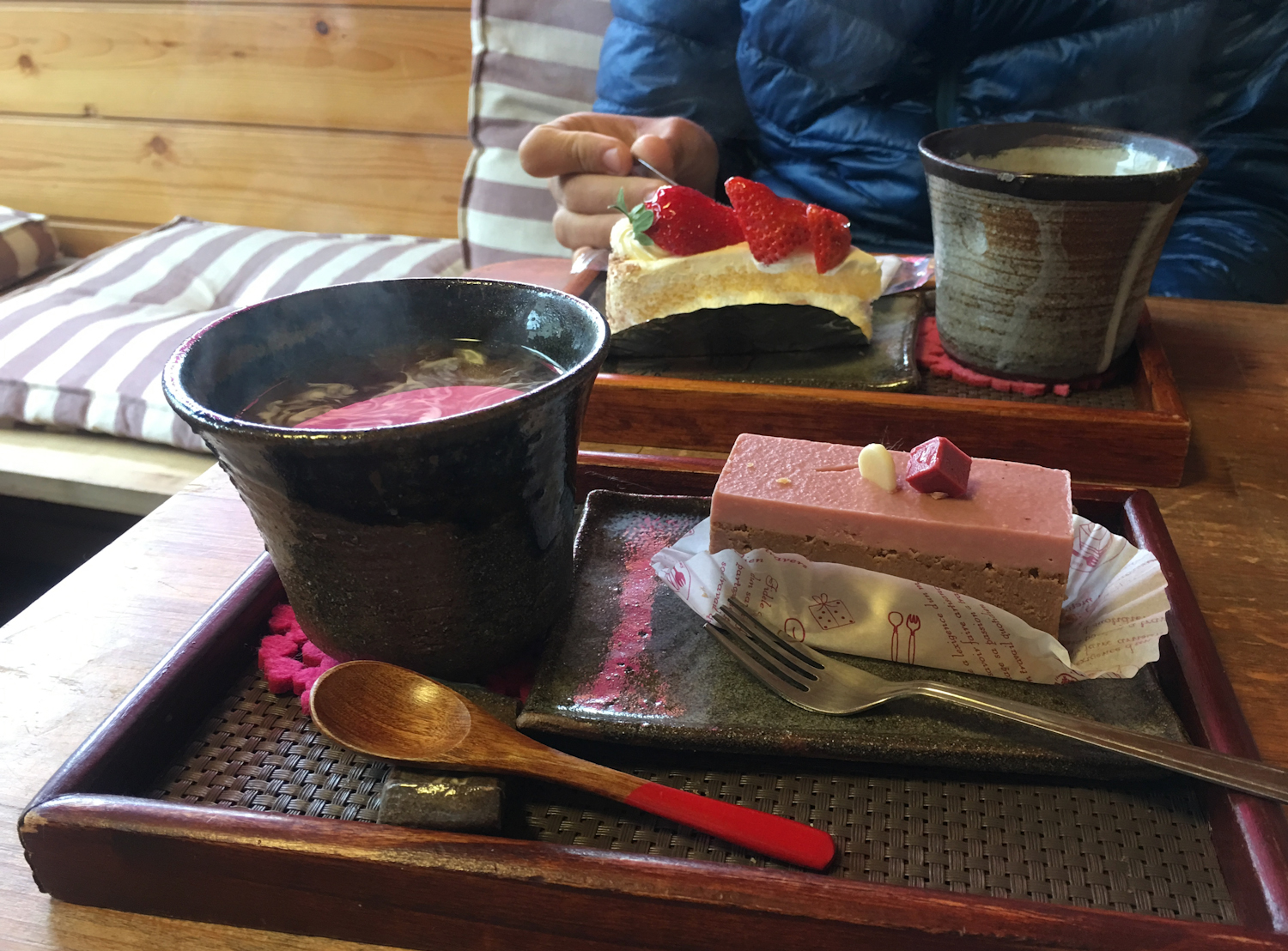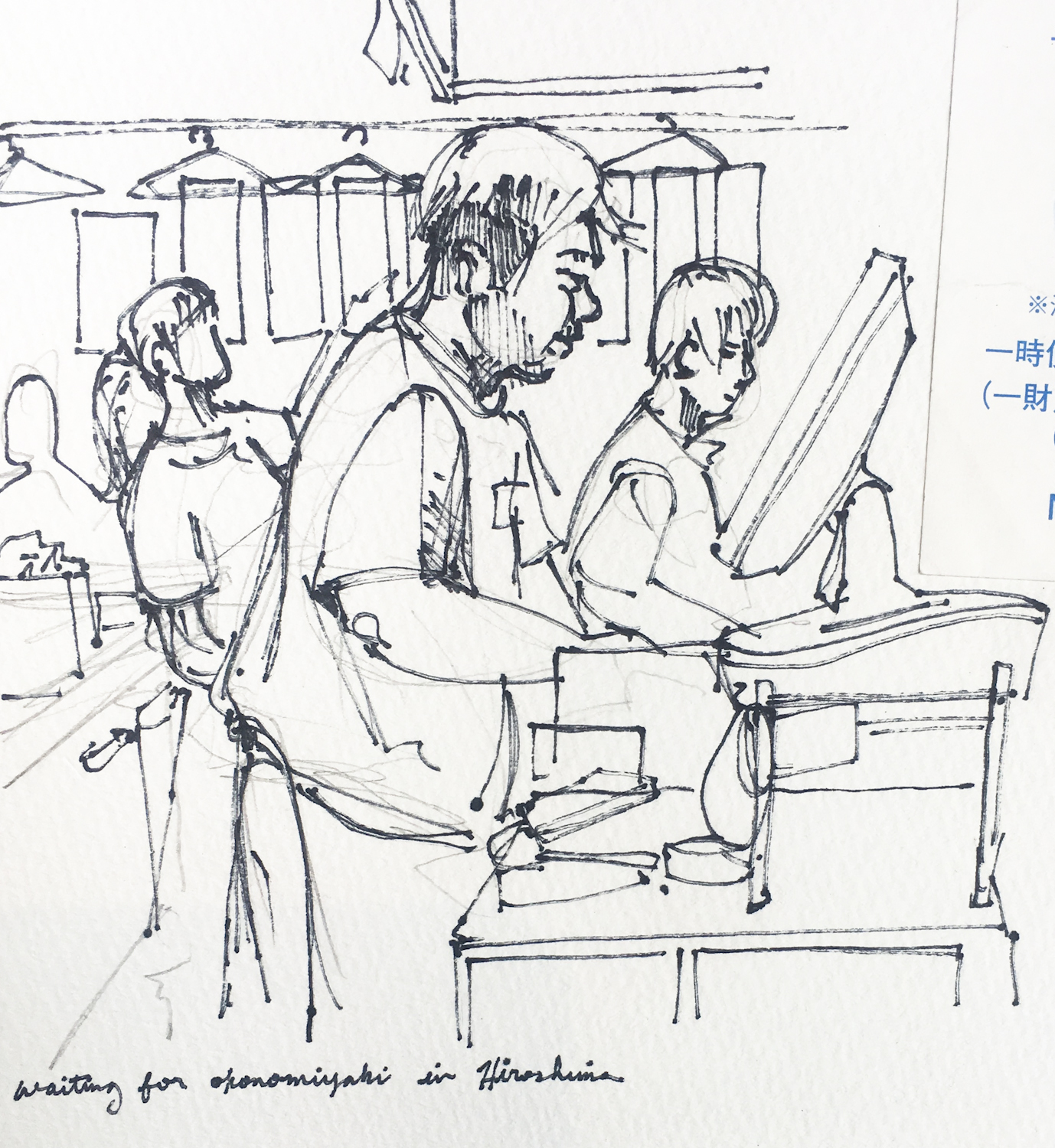Jason asked me: “which stereotypical Japanese foods have you tried?” While reciting the list, I realized that I had tasted each of them in our first two weeks – and more surprisingly, that list was most of our diet. Eating is a large part of what we do as bike tourists, so I thought it might be interesting to post about our experience feeding ourselves in Japan.
What we eat here is more recognizably Japanese than American, and the overlap with our previous diet is actually quite small. In the US, our staples were lentils, quinoa, oatmeal, whole wheat bread and peanut butter. While all these are available in Japan, none (except maybe oatmeal) are common or available in bulk – which meant we needed to change almost everything we ate. This shift was difficult when we first arrived. I spent a few uncomfortable days when nothing, and especially not rice, looked appetizing anymore. Fortunately, this affliction was quickly cured by being very hungry, and I generally feel like we’ve been eating very well.
Our new staple for home-cooked food is brown rice, grown in Japan and sold in convenient 2-kg bags. Our mini rice cooker is small enough to fit in a pannier but is our cooking workhorse, often running two or three times a day. Typical toppings for our rice include eggs (raw or hard boiled), soy or soy-based sauces, canned fish (especially mackerel), and cooked vegetables. Most vegetables here are familiar, but the varietals and price points are all different. Japanese carrots, for example, are cartoonishly fat and round, while yams are smaller and creamy-yellow on the inside. Mushrooms are very affordable and available in great variety, as are cabbage and bean sprouts. While there is a lot of beautiful and expensive fruit (intended to be given as gifts), the more quotidian varieties, especially bananas, are affordable.
We also eat out very frequently, more so than in the US. Eating out in Japan is a great value, and even inexpensive food tastes fresh. Everything is presented thoughtfully and neatly. It’s typical for a meal, even a cheap one, to include half a dozen little dishes. Condiments and sides are served in separate bowls, instead of together on a plate.
We both expected portions here to be small, and they are – what we weren’t expecting was for them to also be quite filling. After most meals we look at each other and say, “well, I guess I am satisfied.” As bike tourists, we frequently still have room for seconds or dessert, but I’ve really grown to appreciate that eating out in Japan simply feels good – instead of making me feel like an anaconda digesting a pig.
Here’s a little bit about the food we eat when we’re away from our rice cooker:
Everything at the Konbini
The convenience store (aka konbini) is ubiquitous and our preferred source of clean bathrooms, ATMs and snacks. They also supply an alarming amount of our diet.
We buy onigiri almost every day: rice balls, typically stuffed with a filling and wrapped in nori. Everyone who visits Japan waxes poetic about these, and for good reason. They’re filling, delicious, and usually about ¥100 each. They come in a cellophane pull-tab wrapper that keeps the nori away from the rice, so it’s crispy when you eat it.
Konbini also sell full, pre-packaged meals, which we’ll grab for lunch or a lazy dinner. They sell bento boxes, which typically have rice, fish, and a variety of small vegetable dishes; microwaveable meals like curry, soup, noodles, or hamburger; a variety of sides in pouches; and tiny pre-packaged salads. All these meals are fairly tasty and seem reasonably healthy, although I’m sure it helps that we can’t read the ingredients. If you catch a konbini at the right time, you’ll see all the fresh items being restocked – nothing seems to last on the shelf for very long.
Of course, we also buy a lot of snacks – nuts, miscellaneous unidentifiable fried things, and every ice cream novelty product imaginable. Browsing the snack section at konbini is actually a relaxing mid-bike-ride break for us. There’s usually something interesting or on sale, and sometimes there’s even a section of local products with hand-drawn labels.
Chains/Family Restaurants
We pass a lot of chain restaurants in the suburbs, and we’ve started to become fond of a few of the more common ones: especially Sukiya, but we also tried Gusto, Joyfull, and Denny’s (yes, that Denny’s), and Hamburg Man. They’re all cheerful and brightly lit. Many of them have “drink bars” where you pay a flat rate for all the drinks and soup refills you like. You press a button to order food. They’re also all cheap – under ¥2000 for dinner for two, or as little as ¥1000 for breakfast.
Ice cream
Soft serve is everywhere in Japan, announced by a waist-high plastic cone outside the door. There’s always vanilla or milk flavor. If there’s a second flavor, it’s probably matcha, but it might also be unique to the area: blueberry, strawberry, and more memorably, tomato.
Street snacks
We are suckers for anything sold on a stick, at a street stall, or out a window. We spend a lot of time at tourist attractions, which often have all of the above. Common street foods include a variety of grilled meats and seafood; sweet and savory grilled mochi on sticks; oden; and the more iconic batter-based snacks like takoyaki and taiyaki.
Bakeries and Cafés
We find bakeries by smelling them before we see them. Most baked goods here are based on a soft, fluffy white bread – it pulls apart almost like a dense cotton candy. This bread is formed into loaves; ham and egg-salad sandwiches; sweets in every shape, filled with cream, chocolate or red bean paste; savory buns, filled with meat or curry; or our favorite, covered in cookie topping and baked into melon pan. Japan also has excellent pastries in mostly a French tradition: perfect, tiny cakes, and viennoiserie.
When we find one, our preferred afternoon break is at a cafe selling a “cake set” – a slice of cake and a cup of coffee or tea.
Local Restaurants
There’s a great deal of variety in Japanese cooking, and it’s impossible to do it justice in a small paragraph. Food seems very regional here. We’ll often find a cluster of restaurants serving a cuisine particular to that area – like a dozen shops selling sea eel bowls, all in a few blocks. Very small restaurants, seating ten (or fewer!) are common. Eating at local places is more challenging for us – we usually can’t read the signs outside, or much of the menu – so we check out pictures online or peek in the window. We’ve always been rewarded with incredible food, and the servers are gracious with our fumbling. We’ve eaten skewered, charcoal grilled tofu; conveyer belt sushi; perfect fried oysters; a lot of okonomiyaki; and a set meal feast at an izakaya.
Japan has given us so many new and interesting ideas about food and eating – I hope I’ve been able to share some of that here.




No carp flavored ice-cream ? cake set sounds so civilized! Most awesome writeup as usual with most excellent sketches. Got the postcard in the mail too. Cant wait to see you guys and hear more detail about your explorations and adventures!